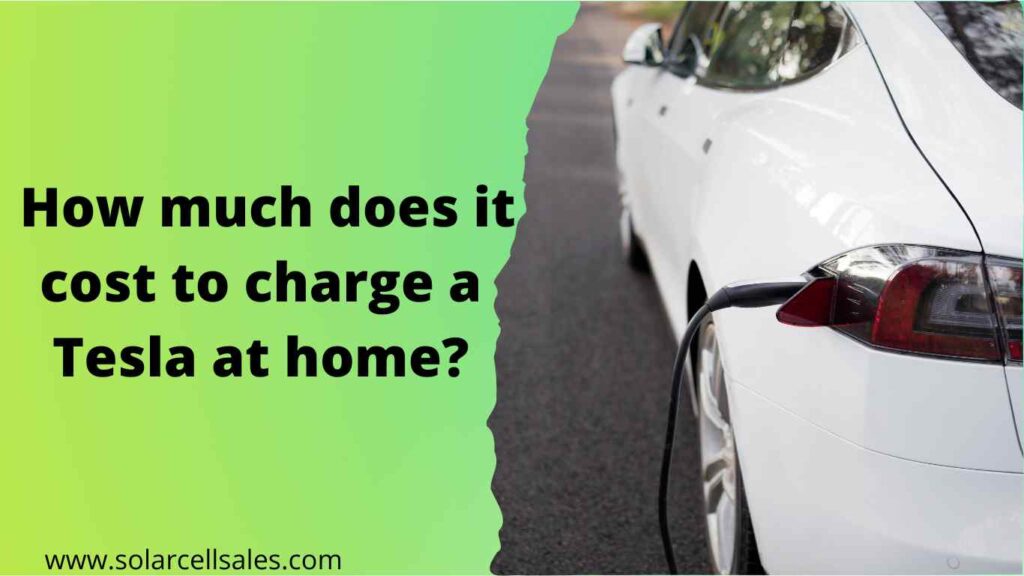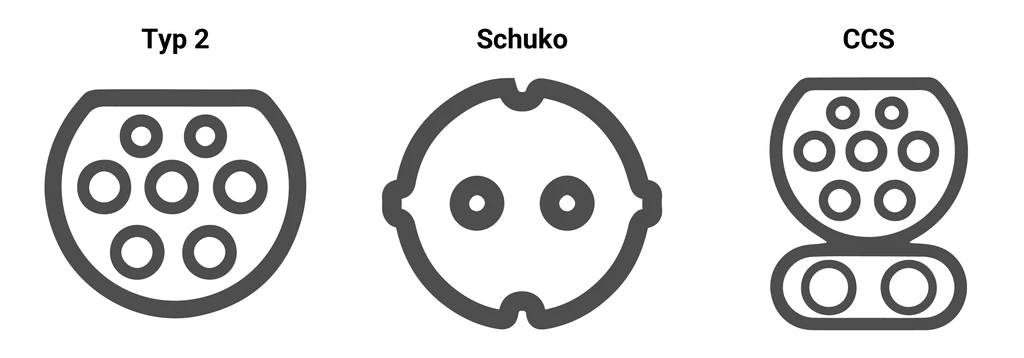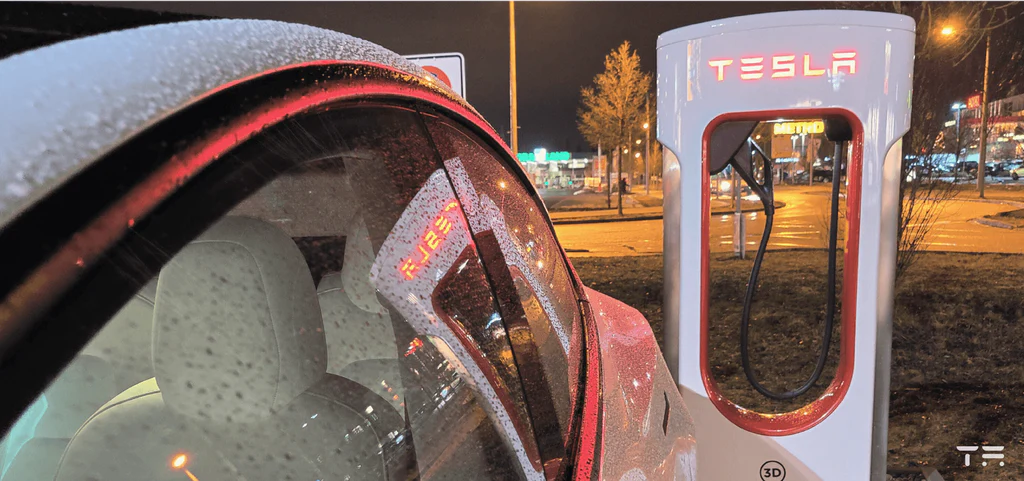
You have fulfilled your dream and ordered a Tesla Model Y or Model 3. Now the question arises how you can charge your Tesla at home. After all, it costs almost half as much to charge your Tesla at home with a Tesla Wallbox and you always have a fully charged electric car in the garage in everyday life. The KFW subsidy, which promoted wall boxes for private households, is no longer available for private households, but it is still worth finding a charging solution for home with sharply rising energy prices.
In this article we answer all your questions about charging Tesla at home. You will find all the information you need to find the right wall box for you. We will go into the different solutions and give you all the information you need to make an informed purchase decision.
Whether you want to charge your Tesla Model Y, Model 3, Model S or Model X at home. This article will help you better understand charging Tesla at home.
Which sockets can you use to charge a Tesla at home?
Let’s start by looking at the different charging solutions. We will also look at which plug you can use to charge your Tesla at home and which charging station you need.
Charge Tesla at the household socket
You can charge your Tesla Model Y, Model 3, Model S and Model X with the Tesla Mobile Connector at any standard household socket. The Tesla Mobile Connector will be given to you when your vehicle is delivered. However, your Tesla model charges very slowly at the household socket, which is also known as a Schuko socket, with a maximum charging capacity of 3.7 kW.
Even if Tesla supplies good accessories with its Mobile Connector, you should definitely be careful when charging at the normal socket that it does not overheat. This is not made to deliver full performance for many hours.
In the worst case, a cable fire can even break out or the line can scorch. It is therefore best to only charge with 8-10 amps or 2.3 kW at the Schuko socket. You can control the amperage through the Tesla app.
A Model 3 charges at 2.3kW for a range of around 13-18 km per hour. That would mean that a long-range Model 3 would take over 35 hours to charge from 0 to 100%. That sounds very slow at first, but it is often sufficient for daily needs. For example, if you commute 100 km every day, the charging capacity is easily sufficient if you charge overnight.
The Tesla Mobile Connector can be equipped with different plugs. It has the great advantage of being one of the few cables that has a charge port opener. So a button on the charging cable, which can open the charging flap of the Tesla.
Charge Tesla at a CEE socket
You can often find the red or blue CEE sockets on industrial sites. These are also called site current or high-voltage current connection. The CEE sockets deliver 3.7 kW charging power with 16 A. Here a Tesla Model Y would charge a range of around 23 km per hour.
However, the corresponding adapter is not supplied by Tesla and must be purchased separately. However, it is sufficient to order only the plug, as this can be easily exchanged with the supplied Tesla Mobile Connector.
It is often much cheaper to move a high-voltage socket to the garage than to install an 11 kW wall box. However, there are a few things you should keep in mind if you want to charge your Tesla this way.
Caution: Heavy current has 400 volts and is life-threatening! It is therefore essential that only professionals carry out the installation.
You should also know that your Tesla is not protected by a CEE socket in the event of a lightning strike. If the charger of your Tesla is damaged, it can quickly cost €5,000. Also be careful with other people’s power sockets. A broken neutral conductor, for example, can severely damage your battery management.
Charge at home with a Tesla Wallbox
If you want to safely charge your Tesla at home, we definitely recommend using an 11 kW wall box. It is connected 3-phase and thus offers three times the power of a Schuko socket. There are many Tesla Wallboxes on the market, the functions of which differ significantly.
The basic thing to know here is that you can easily charge any Tesla model and other electric cars via a wall connector.
Most Tesla Wallboxes on the market have a charging capacity of 11 kW. Wall boxes with higher performance must be requested and approved from local network operators. However, if you want to make a future-proof investment, you can easily buy a 22 kW wall box. This can be easily regulated down to 11 kW.
Although installing a Tesla Wallbox is not exactly cheap, it is the safest option. Such an installation is also future-proof, because a wallbox is usually used much longer than the Tesla. You can be sure that you will still be able to use your wall box in 15-20 years.
Which charging cable do I need to charge my Tesla?
When your Tesla Model 3 and Model Y is delivered in Germany, you will receive several cables. On the one hand, there is the Tesla Mobile Connector, which allows you to charge at Schuko sockets. For an extra charge you can also get the plug to charge at CEE sockets.
A type 2 charging cable is also included. With this you charge in 3 phases. You should always have this cable with you in your vehicle. Many 11 kW and 22 kW charging stations do not have a cable but only a type 2 socket. With this cable you can easily charge there.
In almost all cases, you need a type 2 charging cable to charge your Tesla. You only need the Tesla Mobile Connector for the Schuko socket and you do not need your own charging cable for the Tesla Supercharger. CCS cables and plugs are permanently installed there.

What are the advantages of a Tesla Wallbox?
If you want to charge your Tesla Model Y or Model 3 safely at home, then you can’t avoid a Tesla Wallbox. In addition to the optimized charging speed for the home, a charging station such as the Gen 3 Tesla Wall Connector also offers the highest level of security. After all, you want to be able to sleep peacefully when your Tesla is plugged into the charging station in the garage.
The right wall box for your Tesla already has the necessary protection against electric shock, moisture or AC faults. In addition, such charging stations offer the advantage that you can charge your Tesla much faster than with a household socket.
The charging process is particularly convenient with a Tesla Wallbox that already has a cable with a charge port opener attached. So you can plug your Tesla model into the charging station as soon as you get home and have a fully charged electric car when you leave the house again .
A big advantage of having your own 11 kW Tesla charging station for your Tesla Model 3 or Y is that you never have to drive to the store in everyday life. Just come home, plug in the charging cable and enjoy the end of the day. With your own wallbox, you can also ensure that you charge 100% with green electricity.
How much charging power do you need to charge your Tesla at home?
How much charging power you need depends heavily on your daily needs. If you only drive a few kilometers every day, the charging power of 2.3 kW at the Schuko socket is often sufficient if you charge overnight.
However, if you come home in the evening with an empty battery and have to fully charge your Tesla overnight, then you definitely need a Tesla Wallbox with 11 kW charging power. A higher charging speed is not necessary for charging at home.
What are the differences between Tesla Wallboxes?
Of course, there is no one Tesla home charging station that is right for every Tesla owner. So that you can find the right wall box for you, here are some differences between these charging stations that you should know. We only deal with 11 kW wall boxes. This is the best way to charge your Tesla Model 3 or Y.
Access Control
It is not always possible to install the Tesla Wallbox in such a way that unauthorized persons cannot access it. For example, if you install a charging station in your parking lot and have no access control, anyone could plug in and charge their electric car there.
To avoid this, there are wall boxes with access control. The most common method for this is RFID cards, which activate the charging process through brief contact with the wall box. Some wallbox manufacturers have also set up access control via app.
It is also worth providing the charging stations with access control in company car parks in order to restrict charging to your own electric cars. For individual garages, on the other hand, access control is superfluous. Here you can save depending on the situation.
Protective Device
Another distinguishing feature of any Tesla home charging station is the protective device. No matter which wallbox: a residual current circuit breaker should not be missing. The FI circuit breaker is also called residual current circuit breaker and is used to compensate for residual currents. This protects the battery management of your Tesla Model 3 or Y.
The Gen 3 Tesla Wall Connector already has this FI circuit breaker installed in the charging station, while other wall boxes require an additional FI circuit breaker. So please note that there may be additional costs of around $200 if the 11 kW wallbox you have chosen does not have this protective device.
Invoice
Depending on the charging situation, it can be important to be able to calculate the charging current accurately. Especially in rented apartments or apartment buildings, the Tesla charging station is often also intended for charging other electric cars. There are two options here, intended for different situations.
On the one hand, an extra electricity meter can be installed, which only measures how much electricity is consumed in total via the charging station. This is relevant, for example, for rented apartments where, for example, 1 tenant wants to charge a Tesla Model 3, but the electricity is to be billed separately from the house electricity.
If several electric cars are to be charged at one charging station, more precise billing is required. There are special charging stations for this, which can also map such a logic. It is important to know that just because the wall box can bill separately does not mean that it is legally allowed to do so.
The most important keyword when billing electricity consumption separately is calibration law. Only if a wallbox is also compliant with calibration law can it be billed separately. The calibration law ensures that the electricity readings are correct and that the users of the charging station can rely on the fact that the measurements and billing are correct.
How much does a Tesla Wallbox cost?
In order to determine the cost of a wall box for your Tesla, it is important to look at all the cost points from purchase to installation.
A Tesla Wallbox to charge at home costs between $500 and $2,000 to purchase – depending on the equipment. In addition, there are about $500 to $2,000 installation costs and electricity costs of about 28 cents/kWh.
If you buy a Tesla Wall Connector, for example, you pay $530 plus installation. To find out the installation costs, book a free estimate with a local electrician. This is usually always offered.
Acquisition Cost
The cost of a charging station for your Tesla Model 3 or Y is the same as the price of the wall box. Note, however, that a wallbox without a cable may mean that you have to buy this separately if you need something other than what Tesla provided.
The missing protective device also costs extra. An external FI circuit breaker costs around $200 in addition to the wall box. It is therefore worth checking whether such a circuit breaker is available when you compare the prices of wall boxes.
Installation Costs
As already mentioned, the installation costs can also vary greatly. If the necessary infrastructure is already in place, installing a Tesla Wall Connector or similar wall boxes can cost as little as $500. However, if a new power cable has to be laid through walls and a channel has to be drilled first, the prices can sometimes rise to over $2,000.
Additional costs arise if load management has to be set up because several charging stations are to be operated side by side. Of course, an additional electricity meter costs extra if it is needed.
Electricity Costs
Regardless of whether you want to install a wall box for your Tesla Model 3, Model Y, Model S or Model X, talk to your electricity provider and compare the prices with other providers.
Energy costs have risen sharply in Germany this year. With existing contracts, you can expect electricity costs of around 26 to 30 cents per kWh. With new contracts, however, the prices can vary greatly. So get information from several providers.
Some electricity providers offer special tariffs for e-cars. These are tariffs that offer significantly cheaper charging of your Tesla outside of peak times. So if you charge overnight, for example, you can benefit from the low prices.
Maintenance Costs
In private households, you should have your wall box serviced about every 2 years. Although this is not mandatory, maintenance is worthwhile in order to avoid possible risks. When maintaining a wall box, you have to reckon with costs of around $200.
How much does it cost to charge a Tesla?
The cost of charging a Tesla at your own wall box depends on the price of electricity per kilowatt hour on the one hand and the capacity of your Tesla’s battery on the other.

Charging a Tesla Model Y Long Range with a 77 kWh battery at home costs around $22 at 28 cents/kWh. A Model 3 basic model with a 55 kWh battery costs $15.40. A Tesla Model X P100D and a Model S P100D with 100kWh battery $28 each.
Of course, these are just examples and there are many different Tesla models and variants. So you can easily calculate it yourself. Simply find the battery capacity of the respective Tesla vehicle and multiply it by the electricity costs per kWh.
Example: Tesla Model 3 Long Range with 82 kWh battery x $0.28 electricity costs = $22.96
In reality, you mostly use the range between 10% and 80% of your battery’s capacity. Therefore, multiplying by a factor of 0.7 gives you a more realistic result. If you charge the Tesla Model 3 Long Range from the example from 10-80%, it costs $16.07.
Compared to the Supercharger, it is significantly cheaper to connect your Tesla to the wall connector. After all, superchargers currently cost 48 cents per kWh. Superchargers are only free at certain times .
Which charging power is best for the Tesla battery?
This question can also be answered briefly and concisely with 11 kW. The battery management of your Tesla ensures minimal battery degradation with 11 kW charging power from the wall box.
Your battery loses the least range or capacity with regular charging at 11 kW. This is because, compared to the supercharger, the battery does not have to be brought to the right temperature first and the charging currents are also significantly weaker.
Which Tesla Wallbox is right for me?
The market is full of wall boxes for charging Tesla and Tesla itself also offers the Tesla Wall Connector for Tesla Model 3 and Co. It’s easy to lose track and don’t even know where to start looking.
To help you find the right Tesla Wallbox for charging at home, we have written an article about the Tesla Wallbox and alternatives for you. You can find the right Tesla Wallbox that suits your situation in no time at all.